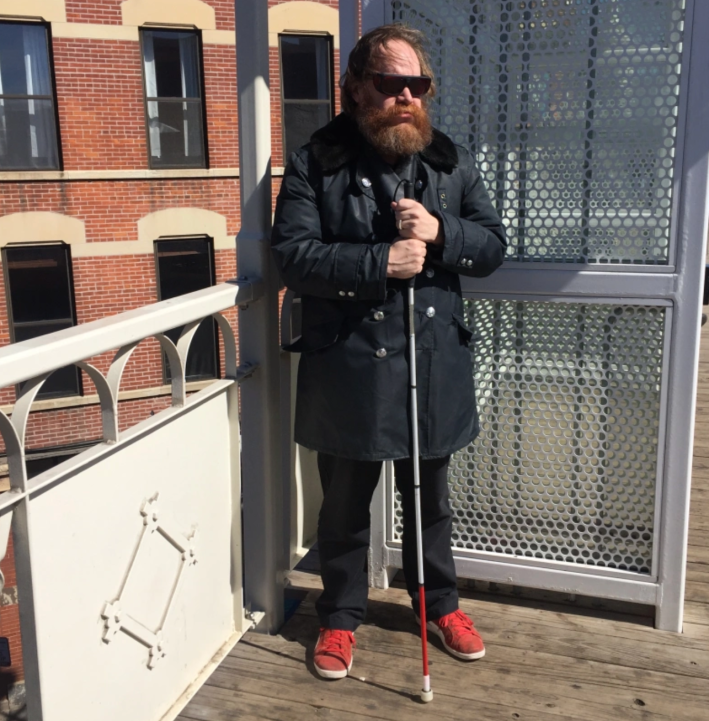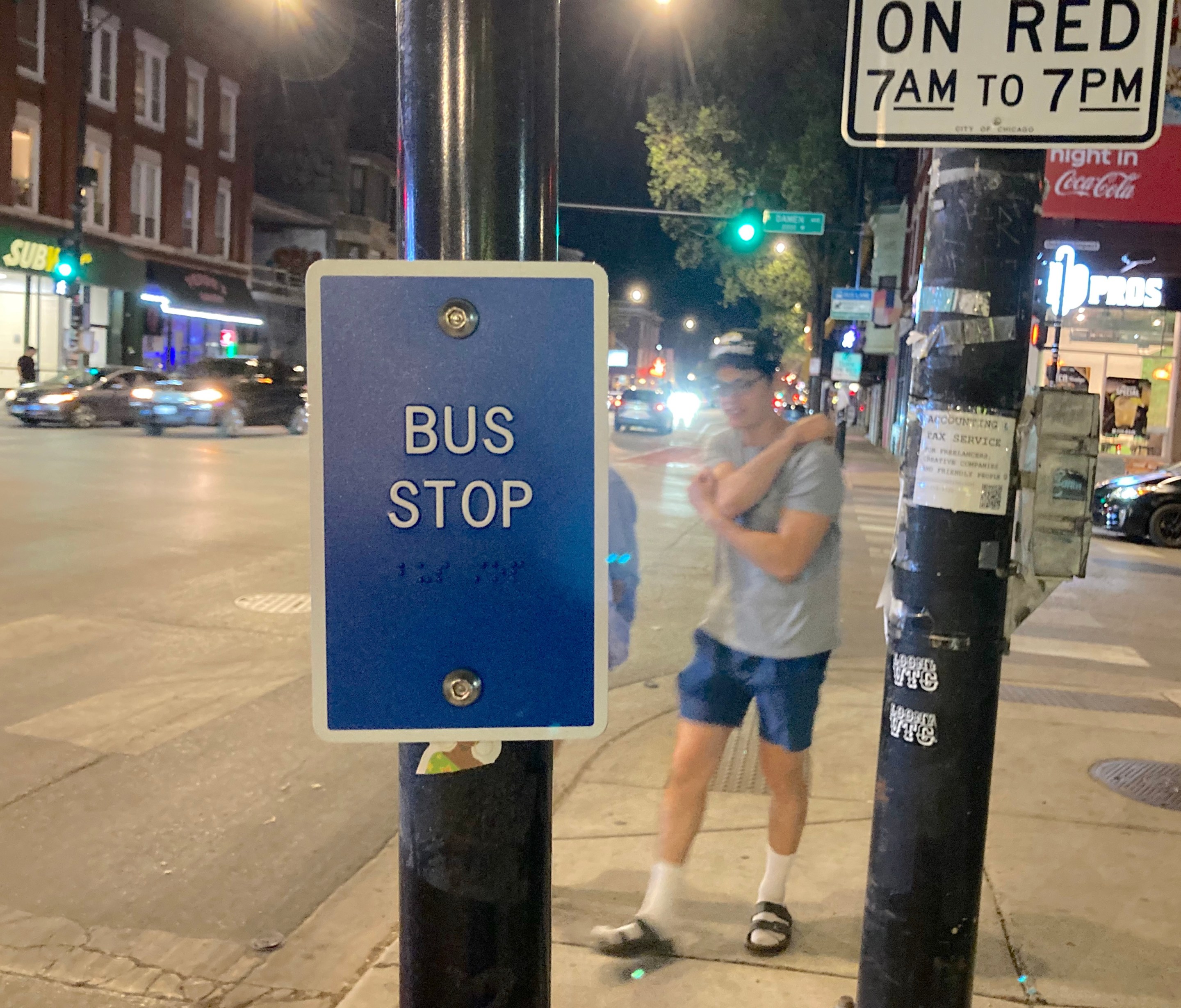Last summer, the CTA began rolling out a new program to make riding the bus more accessible for Chicagoans with vision impairments. The pilot program involves the installation of tactile bus stop signs that feature the words “BUS STOP” in raised typeface as well as in Braille at routes throughout the city. Since launching the program in August 2022 on the #22 Madison Street Route, the agency has installed 1,300 tactile signs at stops along 12 of the city’s bus lines:
- #4 Cottage Grove
- #X4 Cottage Grove Express
- #9 Ashland
- #X9 Ashland Express
- #12 Roosevelt
- #20 Madison
- #49 Western
- #X49 Western Express
- #63 63rd
- #66 Chicago
- #79 79th
- #157 Streeterville/Taylor
Now the CTA is adding the tactile signs to two more bus routes: #3 King Drive and #82 Kimball/Homan. The lines were selected with the help of a focus group that included representatives from various disability organizations, along with the CTA’s ADA [Americans With Disabilities Act] Advisory Committee, the Mayor’s Office for People with Disabilities and Metra. Factors that contributed to the selection of these routes include their proximity to blind services and hospitals, ridership demographics, and the number of connections to other bus and rail lines.
The idea for the tactile bus sign program originated after the CTA received feedback from riders who are blind or have low vision. The signs are four inches by 6.5 inches in size and positioned between 48 inches and 60 inches from the ground on the existing bus stop poles. Displaying the phrase “BUS STOP” in Braille and raised lettering, the signs are placed so they face the approaching bus.
The sign program is funded by the Section 5310 Enhanced Mobility of Seniors and Individuals with Disabilities Grant. The cost for the expansion of the tactile signage program is covered by the project’s original total funding amount of $380,350.
Commenters on previous Streetsblog coverage of the initiative noted that while the signs aren’t perfect, it is helpful to know exactly where to stand so bus drivers recognize potential riders and don’t pass them by. And the simple wording of the signs makes sense, because any more detailed info would become outdated as bus routes change.
Laura Saltzman, transportation policy analyst for Chicago-based disability advocacy group Access Living, said via email she views the efforts as a step in the right direction. “We are happy the CTA was able to take advantage of grants for these signs and welcome further improvements for wayfinding. Increased access to transit is a continuous goal, and moving beyond this, we must allow for further wayfinding infrastructure that expands access towards full accessibility for people who are blind or have low vision.”

Sound designer, musician and artist Andy Slater, who is blind, agrees that the tactile signage can be beneficial to visually impaired bus riders. “I do appreciate that they're just going analog because so many times people try to solve the problem through new technology that [people with disabilities] don't know,” he said. “I can tell that there were blind people as part of the creation process, which is always very important.” He added that these signs will help increase awareness of people with disabilities among CTA employees and the general public.
Read more of Slater's thoughts on navigating the CTA as a blind person here.





